
Little Boy was a type of atomic bomb created by the United States as part of the Manhattan Project during World War II. The name is also often used to describe the specific bomb (L-11) used in the bombing of the Japanese city of Hiroshima by the Boeing B-29 Superfortress Enola Gay on 6 August 1945, making it the first nuclear weapon used in warfare, and the second nuclear explosion in history, after the Trinity nuclear test. It exploded with an energy of approximately 15 kilotons of TNT (63 TJ) and had an explosion radius of approximately 1.3 kilometres (0.81 mi) which caused widespread death across the city. It was a gun-type fission weapon which used uranium that had been enriched in the isotope uranium-235 to power its explosive reaction.

Trinity was the code name of the first detonation of a nuclear weapon, conducted by the United States Army at 5:29 a.m. MWT on July 16, 1945, as part of the Manhattan Project. The test was of an implosion-design plutonium bomb, nicknamed "The Gadget", of the same design as the Fat Man bomb later detonated over Nagasaki, Japan, on August 9, 1945. Concerns about whether the complex Fat Man design would work led to a decision to conduct the first nuclear test. The code name "Trinity" was assigned by J. Robert Oppenheimer, the director of the Los Alamos Laboratory, possibly inspired by the poetry of John Donne.

Operation Ranger was the fourth American nuclear test series. It was conducted in 1951 and was the first series to be carried out at the Nevada Test Site. All the bombs were dropped by B-50D bombers and exploded in the open air over Frenchman Flat (Area 5).

Operation Upshot–Knothole was a series of eleven nuclear test shots conducted in 1953 at the Nevada Test Site. It followed Operation Ivy and preceded Operation Castle.
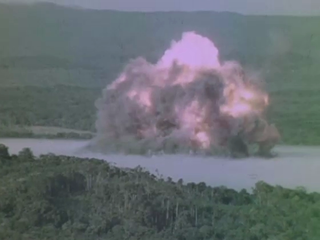
Operation Blowdown was an explosives test carried out in the Kutini-Payamu jungle of Australia's Cape York Peninsula in 1963, to simulate the effects of a nuclear weapon on tropical rainforest. It was conducted by the Australian Army, the Department of Supply, and the Defence Standards Laboratory with participation from the United Kingdom, Canada and United States. In addition, blast effects on military material, field fortifications, supply points, and foot and vehicle movement were examined in a rainforest environment.
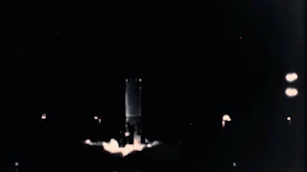
Operation Hardtack I was a series of 35 nuclear tests conducted by the United States from April 28 to August 18 in 1958 at the Pacific Proving Grounds. At the time of testing, the Operation Hardtack I test series included more nuclear detonations than the total of prior nuclear explosions in the Pacific Ocean. These tests followed the Project 58/58A series, which occurred from 1957 December 6 to 1958, March 14, and preceded the Operation Argus series, which took place in 1958 from August 27 to September 6.
There have been many extremely large explosions, accidental and intentional, caused by modern high explosives, boiling liquid expanding vapour explosions (BLEVEs), older explosives such as gunpowder, volatile petroleum-based fuels such as gasoline, and other chemical reactions. This list contains the largest known examples, sorted by date. An unambiguous ranking in order of severity is not possible; a 1994 study by historian Jay White of 130 large explosions suggested that they need to be ranked by an overall effect of power, quantity, radius, loss of life and property destruction, but concluded that such rankings are difficult to assess.

The explosive yield of a nuclear weapon is the amount of energy released such as blast, thermal, and nuclear radiation, when that particular nuclear weapon is detonated, usually expressed as a TNT equivalent (the standardized equivalent mass of trinitrotoluene which, if detonated, would produce the same energy discharge), either in kilotonnes (kt—thousands of tonnes of TNT), in megatonnes (Mt—millions of tonnes of TNT), or sometimes in terajoules (TJ). An explosive yield of one terajoule is equal to 0.239 kilotonnes of TNT. Because the accuracy of any measurement of the energy released by TNT has always been problematic, the conventional definition is that one kilotonne of TNT is held simply to be equivalent to 1012 calories.
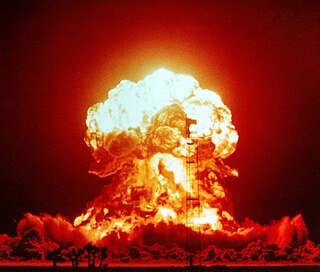
A nuclear explosion is an explosion that occurs as a result of the rapid release of energy from a high-speed nuclear reaction. The driving reaction may be nuclear fission or nuclear fusion or a multi-stage cascading combination of the two, though to date all fusion-based weapons have used a fission device to initiate fusion, and a pure fusion weapon remains a hypothetical device. Nuclear explosions are used in nuclear weapons and nuclear testing.

Explosives safety refers to the practices taken during the use of explosives to prevent injury or death. Explosives include chemicals such as TNT or dynamite as well as other kinds of explosives, such as land mines, C-4s, and IEDs.
Divine Strake was the official designation for a large-yield, non-nuclear, high-explosive test that was planned for the Nevada National Security Site, formerly the Nevada Test Site. Following its announcement, the test generated great controversy, centering on two issues: its potential value in developing a nuclear "bunker buster" warhead, and the possibility that the mushroom cloud generated by the explosion could carry large amounts of radioactive dust deposited at the Test Site over years of nuclear testing.
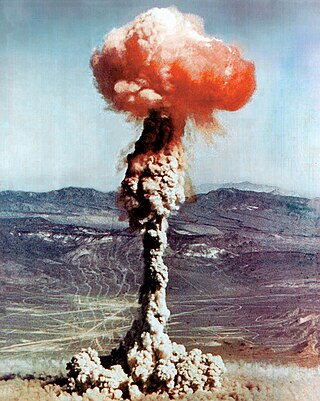
TNT equivalent is a convention for expressing energy, typically used to describe the energy released in an explosion. The ton of TNT is a unit of energy defined by convention to be 4.184 gigajoules, which is the approximate energy released in the detonation of a metric ton of TNT. In other words, for each gram of TNT exploded, 4.184 kilojoules of energy are released.

On October 9, 2006, North Korea performed its first nuclear test, detonating a plutonium-based device underground.

Operation Sailor Hat was a series of explosives effects tests, conducted by the United States Navy Bureau of Ships under the sponsorship of the Defense Atomic Support Agency. The tests consisted of two underwater explosions at San Clemente Island, California in 1964 and three surface explosions at Kahoʻolawe, Hawaii in 1965. They were non-nuclear tests employing large quantities of conventional explosives to determine the effects of a nuclear weapon blast on naval vessels, and the first major test of this kind since Operation Crossroads in July 1946.
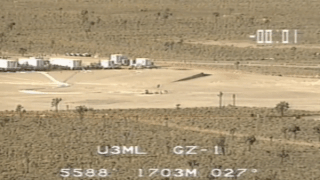
Operation Julin was a group of 7 nuclear tests conducted by the United States in 1991–1992. These tests followed the Operation Sculpin series, and were the last before negotiations began for the Comprehensive Test Ban Treaty.

The United States's Flintlock nuclear test series was a group of 47 nuclear tests conducted in 1965–1966. These tests followed the Operation Whetstone series and preceded the Operation Latchkey series.

Misty Picture was a test conducted on May 14, 1987 by the United States Defense Nuclear Agency involving the detonation of several thousand tons of conventional explosives to simulate the explosion of a small nuclear bomb.
Project 57 was an open-air nuclear test conducted by the United States at the Nellis Air Force Range in 1957, following Operation Redwing, and preceding Operation Plumbbob. The test area, also known as Area 13, was a 10 miles (16 km) by 16 miles (26 km) block of land abutting the northeast boundary of the Nevada National Security Site.

Operation Dominic was a series of 31 nuclear test explosions ("shots") with a 38.1 Mt (159 PJ) total yield conducted in 1962 by the United States in the Pacific. This test series was scheduled quickly, in order to respond in kind to the Soviet resumption of testing after the tacit 1958–1961 test moratorium. Most of these shots were conducted with free fall bombs dropped from B-52 bomber aircraft. Twenty of these shots were to test new weapons designs; six to test weapons effects; and several shots to confirm the reliability of existing weapons. The Thor missile was also used to lift warheads into near-space to conduct high-altitude nuclear explosion tests; these shots were collectively called Operation Fishbowl.

Operation Prairie Flat was a test involving the detonation of a 500-short-ton (450 t) spherical surface charge of TNT to evaluate airblast, ground shock and thermal effects of nuclear weapons.

















